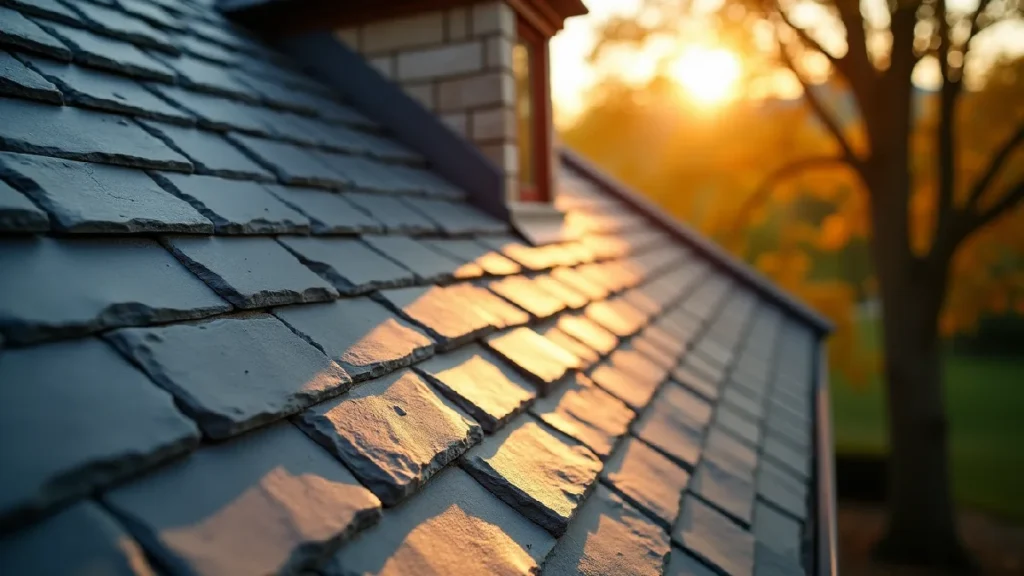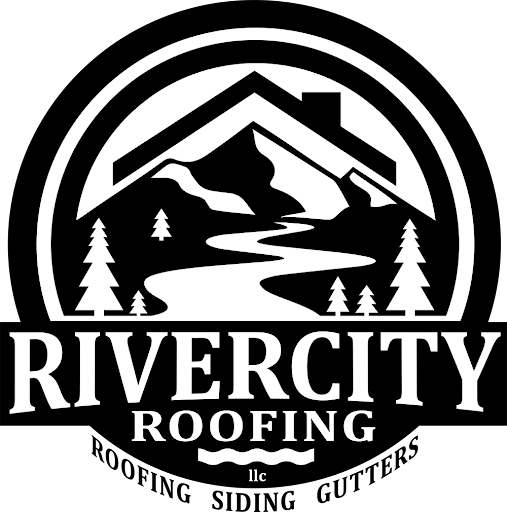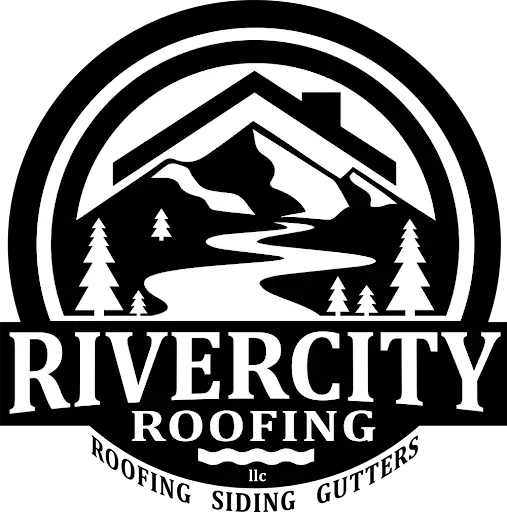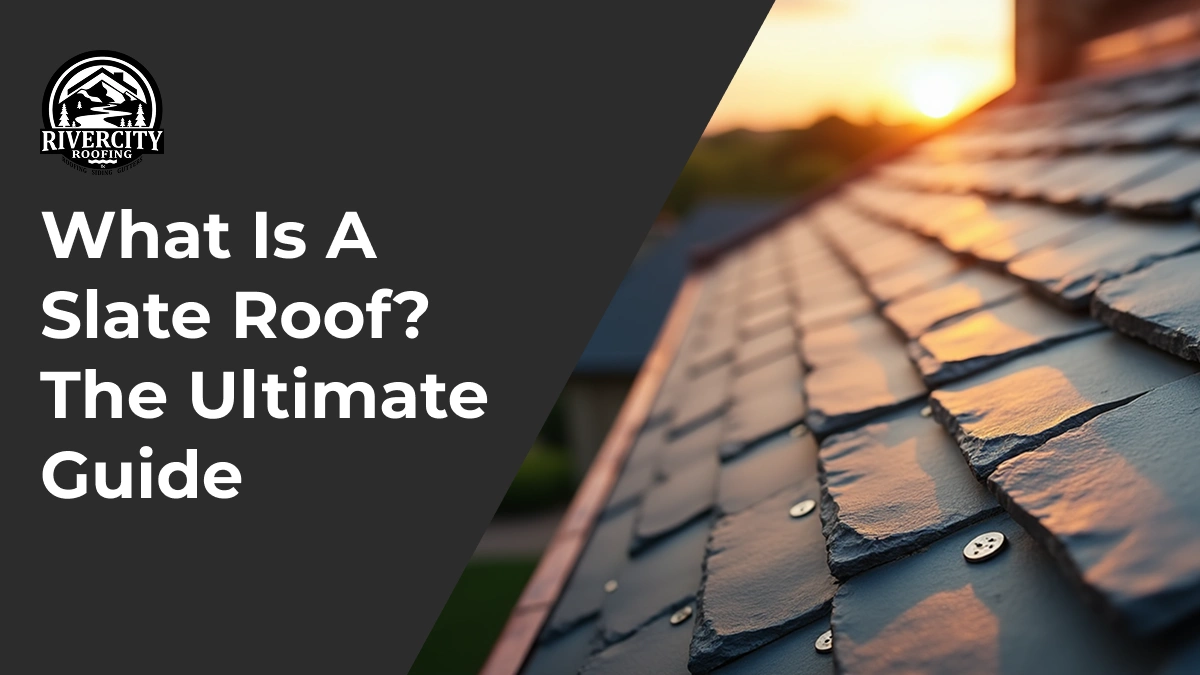A slate roof can last 200 years. That’s not just impressive – it blows away the 5-10 year lifespan of asphalt shingles. The Romans knew what they were doing when they made slate their standard roofing material, and its incredible durability has kept it popular ever since.
The sort of thing I love about slate roofing goes beyond its longevity. These natural stone tiles resist fire, keep insects out, and help protect the environment. A slate roof also boosts your home’s market value and gives you about 80% return on investment. The original cost runs between $15 and $30 per square foot. This makes slate one of the priciest roofing materials out there, but its century-plus lifespan makes it worth considering.
This piece will help you understand what sets slate apart from other roofing materials. We’ll get into its pros and cons and look at everything you need to know about installation and maintenance. This information should help you decide if slate roofing is right for your home.
What Makes Slate Unique Among Roofing Materials
Slate stands out among roofing materials because of its natural geological makeup. This fine-grained, metamorphic rock formed 400-550 million years ago has exceptional characteristics that manufactured alternatives simply cannot match.
Nature’s process of creating slate produces a material with two distinct breaking lines—cleavage and grain. These natural lines let us split slate into thin, smooth sheets that make perfect roofing materials without weakening their structure. The material’s unique composition gives it remarkable strength, with high durability, low porosity, and minimal water absorption.
The minerals in the slate determine its colors. Black slate comes from carbon, while hematite creates red and purple shades. When chlorite mixes with ferrous iron oxide, we get green varieties. Each quarry region produces its distinctive colors. Vermont quarries yield green, grey, purple, red, and black slate, while Virginia and Quebec produce all but one of these varieties—they focus on challenging black slate.

Quality varies significantly between different types of slate. Challenging slate and soft slate are the two main categories that determine how long the material lasts. Challenging slate from Vermont, New York, Quebec, and Virginia can last an impressive 75-200 years. Soft slate from Pennsylvania typically serves 50-125 years.
Slate’s ability to resist multiple threats makes it unique among premium roofing materials. Unlike wood or asphalt shingles, slate:
- Naturally fights fire without extra treatments
- Stays immune to insects, including termites
- Handles severe weather with minimal damage
Slate works best on steeper roofs, particularly those with slopes above 8:12. These steeper installations help rainwater flow down quickly and prevent it from seeping under the tiles.
The material’s weight needs substantial structural support, but the slate’s longevity makes it environmentally friendly since it needs replacement nowhere near as often as asphalt or metal alternatives.
Free Roof Inspections. Fast. Reliable.
Is your roof ready to weather the storm? Dont risk property damage. Our free roof inspections provide expert analysis to identify potential issues before they become costly problems.
Evaluating the Pros and Cons of Slate Roofing
Slate roofing comes with impressive benefits but also brings some challenges that homeowners need to think over. The advantages make it a premium choice, but you should learn about the drawbacks before making your decision.
Slate roofs offer much more than just their fantastic lifespan. These roofs stand firm against harsh weather when appropriately installed. Quality slate achieves an S1 classification in ASTM tests, which guarantees 75+ years of service life. The best slate installations can last 100-150 years. With proper care, they might even reach an incredible 200-300 years.
The environmental benefits of slate are impressive, too. This material has the lowest embodied energy among all roofing options. It needs minimal processing during extraction and manufacturing. Slate uses 6 times less energy to produce than fibre cement and requires 135 times less water than zinc. The material’s embodied carbon value reaches at most 16% compared to other roofing materials.
Some other great benefits include:
- Complete protection from fire, which helps in wildfire-prone areas
- Fantastic resistance to weather that can handle 4-inch hail
- You can recycle or reclaim it after use
But these benefits come with some real challenges. Slate’s weight is a significant factor – it ranges from 800 pounds per square for thinner types to over 5000 pounds for thicker custom options. Most homes need extra structural support to handle this heavy load.
The material breaks easily during handling and installation, which creates another challenge. Once installed, slate becomes super durable, but getting it there takes special care. Finding qualified installers is challenging because they need specialized skills and experience.
The high upfront cost is something to think about, too. Your slate roof will pay for itself over its 100+ year lifespan by avoiding replacement costs. But you should be ready for the initial expense – it typically costs four times more than an asphalt shingle roof.
Installation and Maintenance Essentials
A slate roof’s soaring win relies on four vital factors: the slate’s physical properties, fabrication quality, installation techniques, and regular maintenance. You just need experienced slaters with specialized knowledge of this premium roofing material to handle the installation.
Professional installation starts with a structural check. Contractors must verify if the roof can support the slate’s heavyweight, and they often add extra reinforcement. Quality installation needs specific materials:
- Solid decking materials (3/4-inch board sheathing or 3/4″ APA plywood) give vital support
- Copper or stainless steel nails (20-25mm longer than two slate thicknesses) keep fastening secure
- Quality underlayment protects temporarily during installation
- Durable flashing materials like copper (minimum 16-ounce) or stainless steel work best
Proper headlap (slate overlap) is significant – too little headlap will cause leaks. Installers must place each course of slates along permanent chalk lines that mark the slate’s top edge.
Regular maintenance helps the roof last longer. Professionals should inspect the roof once or twice yearly, usually in spring, to spot winter damage. They look for:
- Broken, cracked, or missing slates that need quick repairs
- Worn-out flashings around chimneys and joints
- Blocked gutters stop proper drainage
- Signs of water getting in
Repairs must follow specific methods. A slate ripper pulls out nails from broken slates. New slates should match the original’s size, shape, texture, and weathered colour. Roofing mastic or sealants won’t work on damaged slates because these materials harden and crack over time.
The money spent on expert installation and regular upkeep pays off through a slate roof’s century-plus lifespan.
Conclusion
Slate roofing is evidence of nature’s remarkable design that gives homeowners an unmatched mix of durability, beauty, and sustainability. We found how slate’s geological formation creates its exceptional properties, and these roofs can protect homes for up to two centuries.
Slate roofs prove their worth through outstanding longevity and minimal effect on the environment despite higher upfront costs and installation challenges. Homeowners seeking long-term security will value the slate’s natural resistance to fire, insects, and severe weather conditions.
You need professional installation and regular maintenance to maximize a slate roof’s lifespan. These requirements need careful attention and expertise, but the benefits make the investment worthwhile. Homeowners get increased property value and fewer replacement needs.
Slate shows why it has remained a premium roofing choice since Roman times as we look toward the future of green building materials. It needs minimal processing, uses low embodied energy, and lasts for centuries. These qualities make it an environmentally responsible choice that fits modern sustainability goals perfectly.



